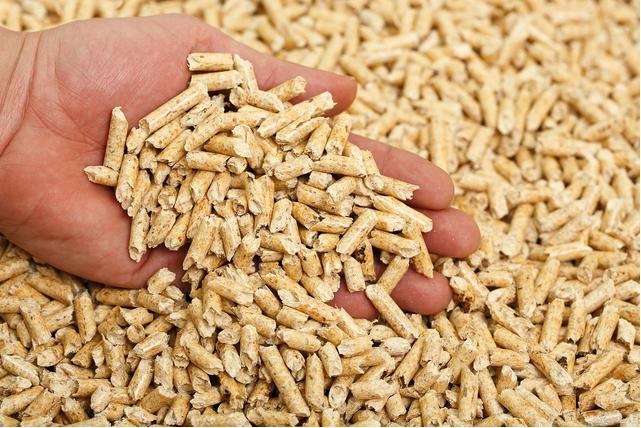Recently, 800 tonnes of sawdust were converted into wood pellets in a globally unique test in Sweden. This is part of the biomass fuel pellet research project InnoPels, which is being carried out on a large scale to investigate the quality differences between pellet fuels from different feedstock compositions.
Wood pellets are an economical and environmentally friendly source of energy made from dried and compacted sawdust from Norway spruce (Picea abies) and Scots pine (Pinus sylvestris), the two main commercial softwood species in Sweden.
As such, they are seen as valuable and important components in the transition to a fossil-free society in Sweden and elsewhere.2022 is a record year for pellet production in Sweden.
Different drying temperatures and sawdust types are needed to optimise the production and storage of wood pellets, and a study is investigating whether the quality of wood pellets is affected by the origin of the sawdust in the wood (heartwood or sapwood).
The overall objective of the two-year project "Improving Resource Efficiency through Innovative New Feedstock Processing in Fuel Pellet Production" (InnoPels) is to provide new knowledge and support for
1. Separation of sawdust from small and large diameter wood. Sawdust from small-diameter wood contains a high proportion of sapwood, while sawdust from large-diameter wood contains a high proportion of heartwood, which has different properties for pellet production.
2. Evaluate low and high temperature drying techniques in relation to the effect of different wood chip fractions on pellet quality and storage properties.
3, Develop rapid spectroscopic methods to assess the quality and process control of pelletising feedstocks.
Self-generated heat can lead to the formation of combustible and toxic gases, another problem when storing pellets, and researchers aim to reduce this potential fire hazard.
To examine the opportunities for improvement of the fuel pellets, approximately 800 tonnes of fresh pine sawdust from small and large diameter wood were transported to the pellet mill of the Sveg municipal energy company Härjeåns Energi AB.
A research trial of this magnitude has never been carried out anywhere else in the world. "Normally, you go to a laboratory to do small-scale experiments," comments Magnus Persson, an innovation consultant and project manager at Paper Province, a leading forest bioeconomy business in the Karlstad cluster.
If the results are good, says Persson, it will have an impact on the whole industry: everyone will be able to learn and benefit from it.
The test is the second of two major tests. The first test was done last autumn and involved low-temperature drying. This time, however, a high-temperature dryer was used.
Michael Finell of the Swedish University of Agricultural Sciences (SLU) says: "The test results were good and now we will continue with measurements and analyses to determine the results." Michael Finell is the project manager for InnoPels.
The InnoPels project, with a budget of SEK 7.3 million (approx. EUR 627,000), is funded by the Swedish Innovation Agency (Vinnova), with Karlstad University, Paper Province, Solör Bioenergi pellets, Härjeåns Energi and Bergkvist Siljan Skog are involved.
(Original article from: Global Biomass Energy Network, New Energy Network)
